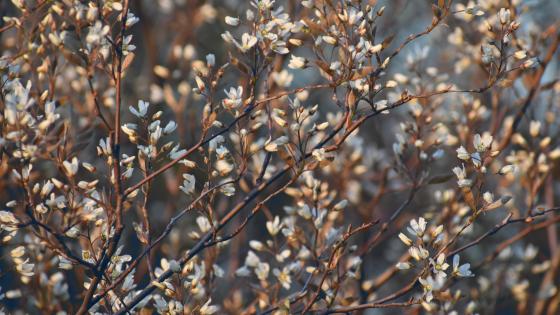
Serviceberry (Juneberry)
Serviceberry (Juneberry)
Juneberry (Amelanchier spp), also known as serviceberry, is a small multiple-stemmed tree or shrub that bears edible fruit. This genus includes saskatoons (Almelanchier alnifolia), which are grown commercially for fruit production in Canada and the North Central U.S. Unfortunately, saskatoons are not considered winter hardy in Kentucky and have serious leaf spot problems in this region. Most other species of Amelanchier are cultivated for use in landscape plantings; however, several of these ornamental cultivars show potential for fruit production. Among these are Allegheny serviceberry (A. laevis) and hybrids (Amelanchier x grandiflora), which are hard and have good leaf spot resistance in Kentucky.
Key Requirements
| Land | Low |
| Labor | High |
| Capital | Medium |
Take the HortBizQuiz to see how much Land, Labor, and Capital you have for your operation.
Markets
- Direct to Consumer
- Farmer's Market
- On-Farm Stands
- CSA
- Value-Added
- Local Grocery
Pests & Disease
Juneberries are susceptible to Fabraea leaf spot, cedar-service berry rust, powdery mildew, and fire blight. Japanese beetles can become a major problem in some plantings. Birds can totally strip plants of their fruit and are the greatest threat to juneberry production.
Costs and returns are presented as estimates. They will vary based on your farm and markets.
Costs and returns are presented as estimates. They will vary based on your farm and markets.
Challenges
- Not a large demand for juneberries so interested producers should start small.
- Difficulty in obtaining large quantities of planting material at a price that is economically feasible, lack of consumer awareness, and the long-term nature of the enterprise.
Opportunities
- Ideal for jams, syrups, juices, pies, rolls, and sweetbreads.
- Juneberries have high nutrient and antioxidant content, and that might be noted as part or point-of-purchase consumer education.
- Clusters of fruit ripen fairly uniformly, making it possible to pick the entire crop within a narrow harvest window.